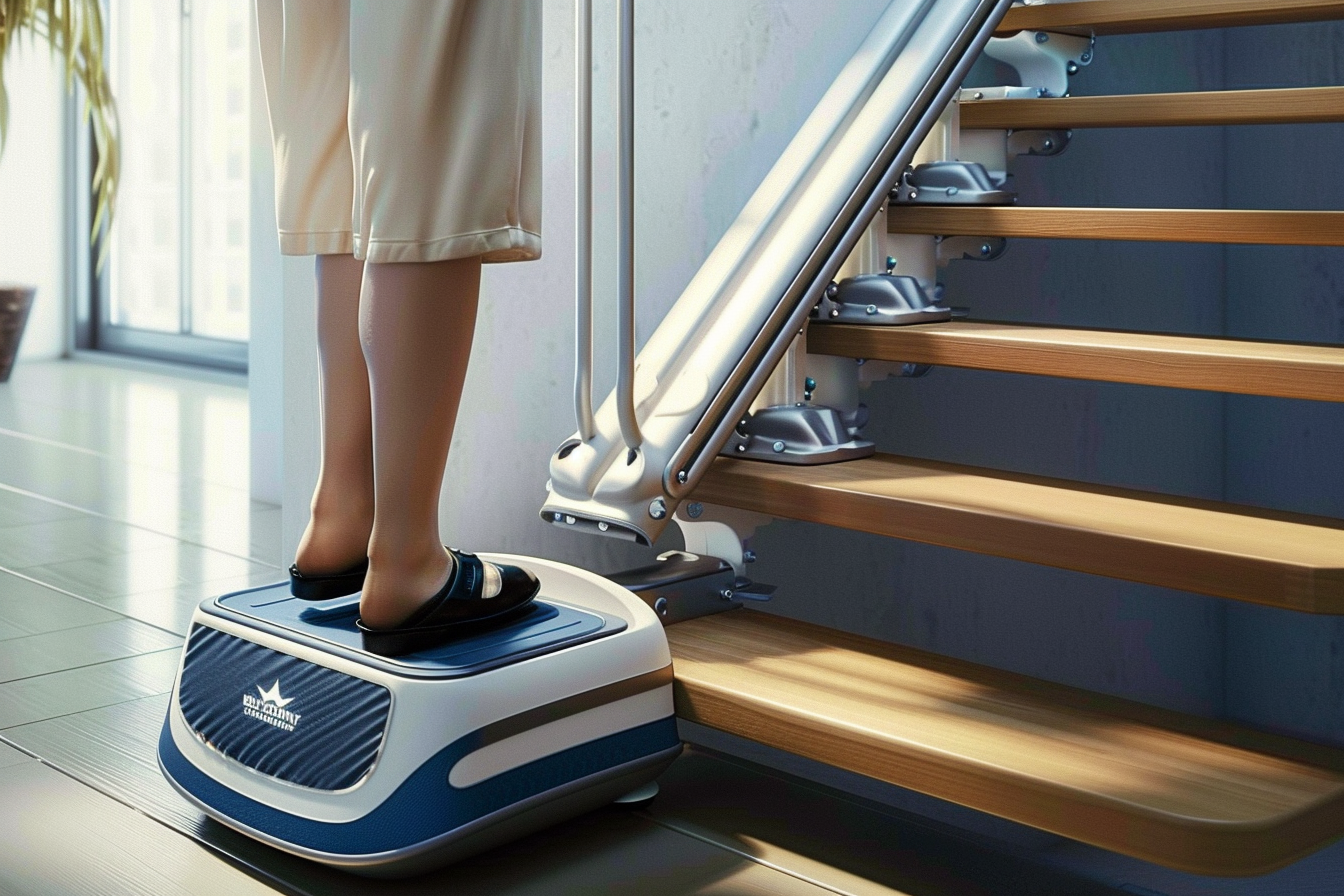Portable Accessibility Solutions for Multi-Level Homes
In the UK, portable stairlifts are becoming an increasingly popular mobility solution for people who need flexibility and independence without the hassle of permanent installation. These devices are lightweight, easy to transport, and can be used on different types of stairs — ideal for renters or those who move frequently. Modern models offer safety features, rechargeable batteries, and ergonomic designs that make them both practical and comfortable to use at home or on the go.

Portable Accessibility Solutions for Multi-Level Homes
Portable accessibility solutions represent a significant advancement in mobility technology, designed to assist individuals with mobility limitations in safely navigating staircases. Unlike traditional fixed installations, these portable solutions can be moved between different locations and often require minimal or no permanent installation, making them ideal for rental properties, temporary needs, or situations where structural modifications are not feasible.
Stairlifts Without Installation: Understanding Portable Options
Portable stairlifts eliminate the need for extensive installation procedures that typically involve drilling, electrical work, and structural modifications. These systems often feature battery-powered operation, lightweight construction, and modular designs that can be assembled and disassembled as needed. Some models utilise clamp-on mechanisms that secure to existing stair railings, while others employ freestanding frames that require no permanent attachment to the home’s structure.
The technology behind installation-free stairlifts has evolved considerably, incorporating advanced safety features such as automatic braking systems, emergency stop controls, and weight sensors. Many models can accommodate curved staircases through adjustable track systems, expanding their versatility beyond straight-run applications.
Mobility Solutions 2025: Current Market Developments
The mobility solutions landscape continues to evolve with technological innovations and changing demographic needs. Current trends in 2025 include smart connectivity features, allowing users to control stairlifts via smartphone applications, remote monitoring capabilities for caregivers, and integration with home automation systems.
Manufacturers are increasingly focusing on user-friendly designs that prioritise comfort and ease of use. Modern portable stairlifts feature ergonomic seating, intuitive controls, and quiet operation to minimise disruption to household activities. Battery technology improvements have extended operational time between charges, while rapid charging capabilities reduce downtime.
Sustainability considerations are also influencing product development, with manufacturers incorporating recyclable materials and energy-efficient components. These developments align with broader environmental consciousness and cost-effectiveness concerns among consumers.
Home Mobility Aids UK: Regulatory and Safety Standards
In the UK, home mobility aids must comply with strict safety regulations and quality standards. The British Standards Institution (BSI) provides guidelines for stairlift manufacturing and installation, ensuring products meet rigorous safety requirements. Portable stairlifts must demonstrate compliance with relevant CE marking requirements and undergo regular safety testing.
Local authorities often provide guidance on mobility aid selection and may offer grant programs or financial assistance for eligible individuals. Occupational therapists frequently conduct home assessments to determine the most appropriate mobility solutions based on individual needs and home configurations.
The Care Quality Commission (CQC) oversees standards for equipment providers, ensuring that companies supplying mobility aids maintain appropriate service levels and safety protocols. This regulatory framework provides consumers with confidence in product quality and supplier reliability.
| Product Type | Provider | Key Features | Cost Estimation |
|---|---|---|---|
| Portable Curved Stairlift | Acorn Stairlifts | Battery powered, no installation required | £2,500 - £4,000 |
| Temporary Straight Stairlift | Stannah | Rental options, quick setup | £150 - £300 per month |
| Mobile Outdoor Stairlift | Handicare | Weather resistant, portable | £3,000 - £5,500 |
| Compact Indoor Unit | Otolift | Lightweight, foldable design | £2,000 - £3,500 |
Prices, rates, or cost estimates mentioned in this article are based on the latest available information but may change over time. Independent research is advised before making financial decisions.
Installation Considerations and Professional Assessment
While portable accessibility solutions minimise installation requirements, professional assessment remains crucial for optimal safety and functionality. Qualified technicians evaluate staircase dimensions, weight capacity requirements, and user-specific needs to recommend appropriate solutions.
Factors influencing selection include staircase width, step height variations, landing space availability, and user mobility limitations. Professional installers ensure proper positioning, safety feature activation, and user training to maximise equipment effectiveness and safety.
Maintenance requirements for portable stairlifts typically involve regular battery checks, cleaning procedures, and periodic safety inspections. Many suppliers offer maintenance packages that include routine servicing and emergency repair services.
Long-term Benefits and Considerations
Portable accessibility solutions provide numerous advantages beyond immediate mobility assistance. They enable individuals to remain in familiar environments longer, potentially delaying or eliminating the need for residential care arrangements. The psychological benefits of maintaining independence and dignity significantly impact overall quality of life.
From a practical perspective, portable stairlifts offer flexibility that fixed installations cannot match. They can be relocated within properties, transferred between homes, or removed entirely when no longer needed. This adaptability makes them particularly valuable for temporary mobility issues or changing household circumstances.
The investment in portable stairlift technology often proves cost-effective when compared to home modification alternatives or residential care costs. Many users find that the enhanced mobility and independence justify the initial expenditure, particularly when considering long-term care savings and improved quality of life outcomes.




